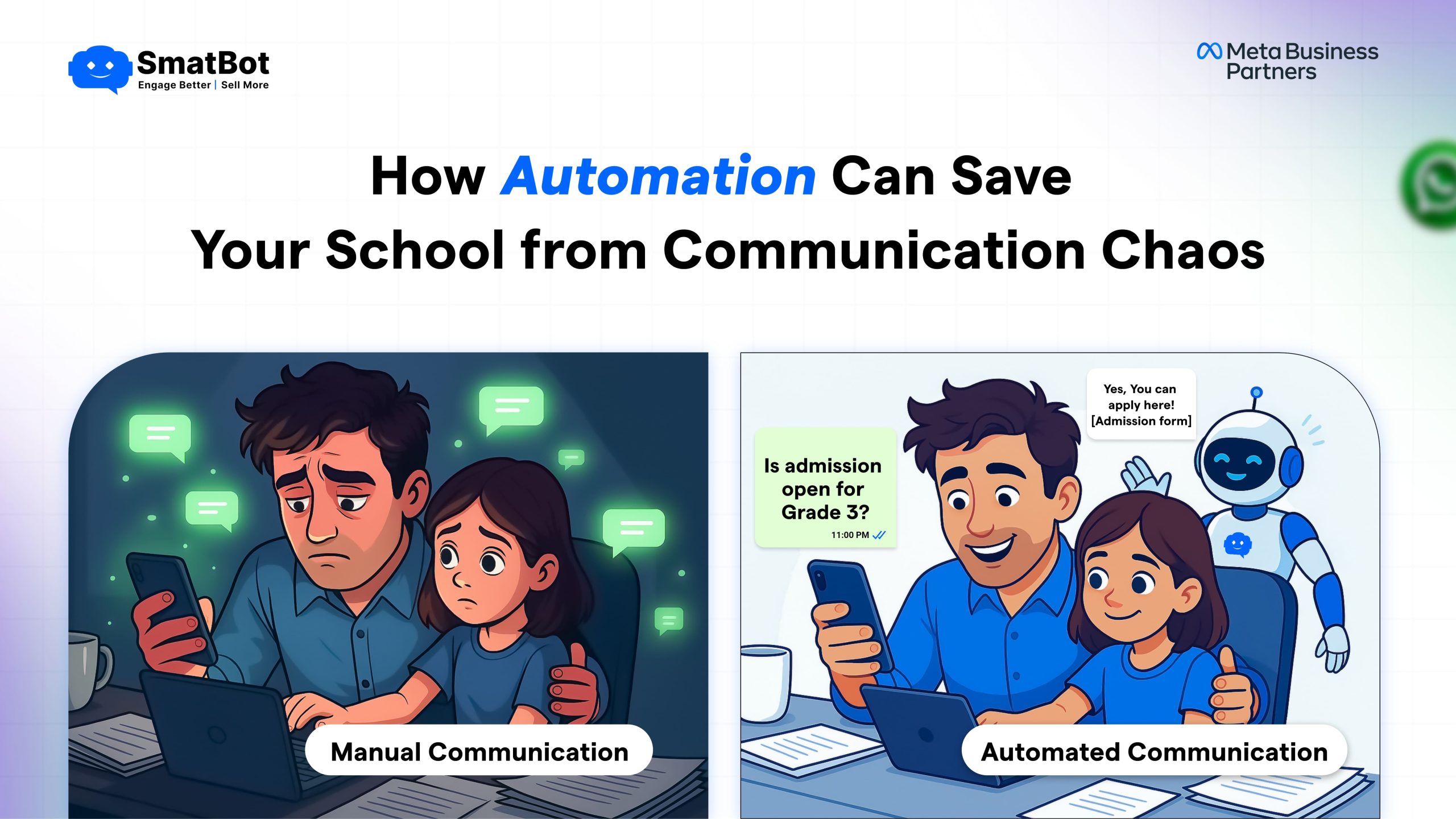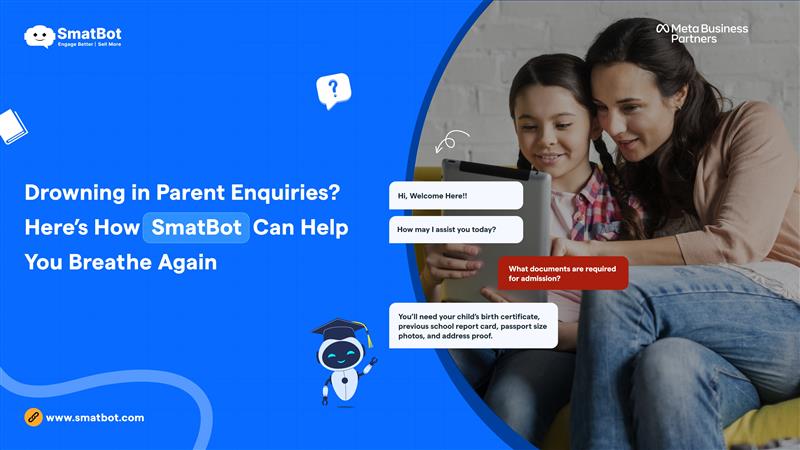Decoding the Future of Conversational AI: Unraveling the Superiority of No-Code vs. Code-Based Solutions
Traditionally, people had to write thousands of lines of code to create a software solution. The traditional method of software or program development requires a significant amount of time and effort. Individuals who lack coding skills face challenges when attempting to develop software.
Non-code-based solutions are a blessing for those without coding skills, enabling them to create their own programs or software quickly.
The question at hand is whether these no-code solutions are reliable or superior to code-based programs.
To answer this question and dispel doubts, we have prepared this article. In it, we will cover every crucial aspect of code-based and no-code-based development, comparing both solutions in various aspects.
By the end of this article, you will undoubtedly have a better understanding of which type of software development best suits your needs.
Without further delay, let us begin our journey.
Quick Overview: Code-based
In a code-based development solution, you are required to write source code using various programming languages such as Java, Python, C#, and more. These source codes are subsequently compiled and transformed into machine code, which can be executed by an operating system.
Code-based program development offers extensive customization options for your software. Additionally, it offers greater administrative control compared to programs built using no-code development software. However, code-based solutions can incur higher costs and pose challenges in terms of management.
Quick Overview – No Code
No-code program development, as its name implies, eliminates the need for coding expertise when constructing software or programs. It represents a contrasting approach to code-based development solutions.
These solutions align with the self-service movement, granting businesses the capability to construct, oversee, and employ data-driven applications that enhance their workflows.
Furthermore, the no-code solution separates programming languages and syntax from logic. It adopts a visual approach to software and application development, facilitating rapid delivery.
Similarities between No-Code vs. Code-Based Solutions
While no-code and code-based development approaches exhibit fundamental differences, it’s worth noting that low-code, which involves reduced coding requirements, shares certain resemblances with the no-code approach. The following are some of the key similarities between no-code and low-code development:
- Visual Approach
Low-code and no-code development eliminate the need for developers with traditional coding knowledge. Both methods provide a visual approach for the development of software or application. This makes the development process more accessible to a vast number of people, especially tech-savvy people working in the business field.
- Accelerated Engineering
These coding methods have contributed to increased productivity and development velocity. They can also help overcome IT backlogs and reduce project timelines.
- Streamlined Feedback
Low-code and no-code development have provided an opportunity for developers to get quicker feedback based on quickly built prototypes. It helps you reduce risks and costs by solving issues at the beginning of the development process.
- Code Consistency
No-code and low-code development also promote structural and code consistency. It helps in debugging any software or development problem. It allows developers to spend more time troubleshooting instead of understanding the framework.
- Balance between IT and Business Sectors
Historically, the business and IT sectors often found themselves at odds. The advent of no-code and low-code development has ushered in a spirit of collaboration between these two industries.
Differences between No-Code and Code-Based Development
Both code-based and no-code solutions serve as development methods for creating software or applications. However, they diverge significantly based on several key factors.
Outlined below are the primary factors that set code-based and no-code development solutions apart:
- Skillset
Code-Based Development: Traditional development necessitates software engineers possessing specialized programming skills. This approach involves utilizing an array of tools and functions to construct intricate software or applications. It is a wholly manual process, demanding the composition of intricate code. Moreover, it can be intricate and burdensome on the IT department.
No-Code Development: In contrast, no-code development does not mandate specific skills or fundamental programming languages. This approach obviates the requirement for tools and functions. As a result, individuals from various departments can effortlessly develop software or applications.
- Cost
Code-based development is quite expensive compared to no-code development. It ranges between $20,000 to $50,000/app. However, the cost may vary depending on the demand of the company and the scope of the project.
On the other hand, no-code development is cheaper than code-based development. The price of no-code development begins at $3000/month. The reason behind the cheaper cost of this development is that the company only pays to access the specified service instead of paying from start to end of the development.
- Quality
Apps and software developed through code-based or traditional methods are characterized by high scalability and exceptional performance. However, owing to their intricate technical nature, these solutions often grapple with a multitude of bugs. The process of testing and debugging becomes time-consuming in this context.
On the other hand, no-code platforms yield applications with minimal bugs during development. Although they may offer standard performance with extensive integration, they excel in maintaining an error-free software environment due to their live debugging options.
- Agility
Code-based or traditional development lacks agility. Implementing a change in one step can take days, and the application or software may become non-functional during the alteration. This inflexibility can negatively impact the customer experience.
Conversely, no-code software exhibits high agility. It enables instantaneous changes without disrupting the user experience. In fact, it enhances user satisfaction by empowering them to integrate features according to their requirements and feedback.
- Integration
Integration in no-code platforms is facilitated through user-friendly plugins and add-ons. In contrast, code-based platforms demand coding, necessitating extensive time and information exchange between the two systems undergoing integration.
- Maintenance
Maintenance for code-based solutions can be quite challenging. It mandates an in-house or third-party development team to execute any required changes. In contrast, no-code solutions are overseen by the third-party company or the business that owns the platform. This streamlined approach to maintenance simplifies the process, as the hosting company itself manages the entirety of the maintenance tasks.
Benefits of Code Based Solution
Building a code-based platform might take a lot of effort and time, which can be complicated for several developers. But it has several benefits that force people to use them. Below are the top three benefits of code-based solutions:
- High controls
You can excel with complete control over the app or software development when using code-based or traditional development methods. Professional developers will have the majority of control over how they code. They can easily manage and write code for how the software or application should be structured.
- Total ownership
Total ownership is another significant benefit of using code-based development methods. By developing the product using this method, you will own every aspect of the product like security, integration, architecture and more.
- Flexible access
Traditional or code-based development is possible with almost any programming language or development platform. Yes, you read it right, using code-based development, you can develop all types of customized apps or software with the help of any programming language or code.
- Unlimited functionality
Coding companies can twist and bend any aspect of a program or software to their liking. This implies that any type of integration is possible and any desired feature can be developed. Developers will also get the freedom to choose hosting, APIs and tools that help achieve the required functionality.
- Deploy anywhere
Many companies aim to use or launch software and applications wherever they need them. However, no-code platforms used to restrict this, as they required specific platforms for deploying their apps or software.
Code-based or traditionally developed apps are perfect for this requirement. All the apps created traditionally can be deployed anywhere to whatever destination or place developers want to support.
- Smooth development
One needs a well-established and well-defined development process to create a successful application or software. Code-based development comes with everything needed to develop an excellent app or software. This process ensures that apps can be updated, maintained and released to the public.
Benefits of No Code Solution
Like code-based development, no-code development also has several benefits which is the reason behind its popularity. Below are the top benefits of no-code solutions:
- Zero coding knowledge
No code solutions require zero coding knowledge to develop applications or softwares. These solutions can be used to develop a wide variety of applications, from simple apps to complex apps. Anyone can use drag-and-drop and visual interfaces to design the user interface to develop data models and configure business or company logic without writing a single line of code.
- Fast
In today’s world, customers expect the quickest delivery of their products. The No-code solution has the ability to help you meet their expectations. No-code development is generally faster than traditional or code-based development.
A simple app takes a few hours to develop, while a complicated app takes a few days. However, the speed can vary depending on the scope and complexity of the project. The visual interface, drag-and-drop tools and more are the primary reasons behind the faster development speed of this method.
- Cheap
No-code development is also cheaper than low-code or code-based development. While code-based development needs a team that costs you somewhere between $45,000/month, no-code development eliminates the need for a developer team for software or app development.
You can ditch the expensive IT team for apps that don’t need complex coding. Your own team can handle app development with ease. This will save you a lot of money.
- Agile
No-code development gives business teams more agility to respond to changing customer behavior and market dynamics. This development method allows you to perform the following tasks that increase agility:
- Find the most-liked feature by users
- Identify the low-value feature.
- Make adjustments rapidly with no-code development tools
- Build prototypes quickly to get feedback from users
- Reduce risks of errors and bugs with built-in features.
- Easy to update
In today’s tech world, things are always changing and these changes are needed to add new features to your app or software. Back in the old days, updating software was a pain and sometimes even meant shutting down the app or software. But with no-code development you can easily create new features and have them up and running in no time.
- Flexibility
With no code development, your data is stored in a JSON document, allowing you to load data faster and more logically. This platform gives you the flexibility to start building your program immediately, with full control to adjust and redirect when needed.
Pros and Cons
Like other tech or non-tech stuff, no-code and code based development have pros and cons. Let us explore the pros and cons of both development methods.
Pros and cons of code-based development
| Pros | Cons |
| Full customization | High technical skills needed |
| More admin control | Consume more time in development |
| High scalability | Expensive |
| Custom UX/UI | |
| Ensure high quality |
Pros and cons of no-code development
| Pros | Cons |
| Easy to maintain | Limited templates |
| Faster to build | Lack of control |
| Cost-effective | Reliance on host |
| More agility | |
| Enhance your productivity |
When to choose no-code vs. code based solution
No code
You can choose a no-code solution when you meet the following conditions:
- If you have limited funds or an IT team.
- Looking for a simple and easy modification and solution with limited needs for 3rd party integration and data transfer.
- You want to create apps or software in a shorter time.
- You want a third-party security service.
- If you want limited customization options.
Code-based
You can choose code based solutions if you can meet the following conditions:
- If you want a high level of customization, security, flexibility and reliability.
- You have a vast infrastructure and several employees working in several sectors.
- You have a high-demand for integration
- You need to align business objectives with digital products.
- You have enough budget.
How is a no code chatbot different compared to a code based chatbot solution?
The primary distinction between a no-code chatbot and a code-based chatbot lies in the requirement of coding knowledge. No-code chatbots do not necessitate any coding expertise for their development. Instead, they employ a visual interface that enables you to design and construct chatbots from scratch by simply dragging and dropping elements. Even individuals without coding experience can construct a fully-functional chatbot within minutes.
In contrast, code-based chatbots demand a deep understanding of programming languages such as Python, Java, C#, etc. This type of chatbot solution is not well-suited for those who are not well-versed in technology.
An excellent example of a no-code chatbot platform is SmatBot. It provides a no-code chatbot solution that facilitates the creation of customizable chatbots for various purposes, such as live chat support, lead generation, surveys, appointment scheduling and many more for your business. Additionally, even if a code-based solution is required, the skilled SmatBot team can develop a tailored solution specific to your business needs.
Conclusion
In the evolving landscape of software development, the debate between no-code and code based solutions focused on their respective merits. Code-based solutions provide control, customization and readability. In contrast, no-code solutions provide fast speeds, agility and cost-effectiveness. However, both solutions also have several cons and disadvantages.
We hope that our article was helpful for you in choosing a better development solution. It would be best to consider your needs and requirements when choosing the best development solution




